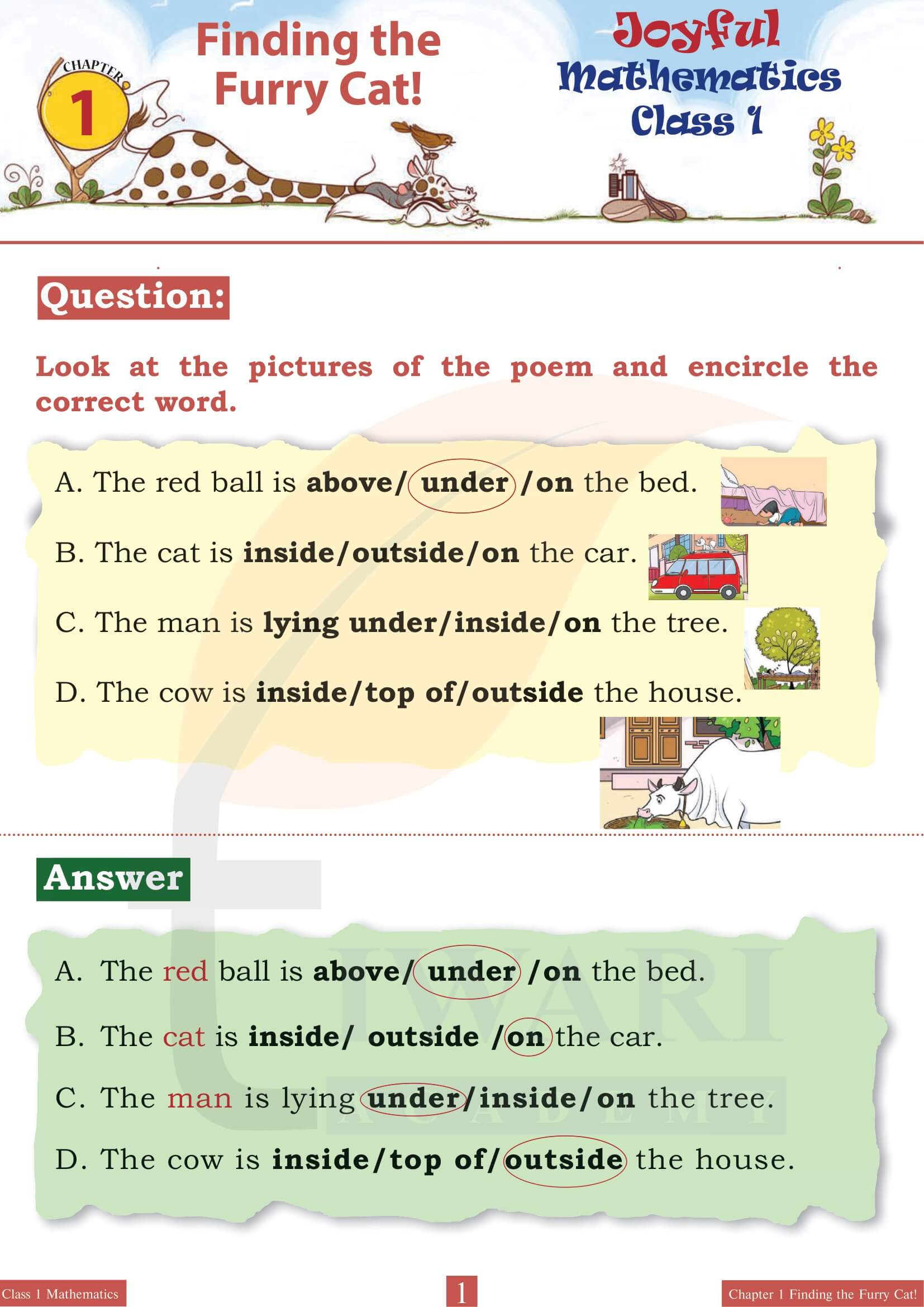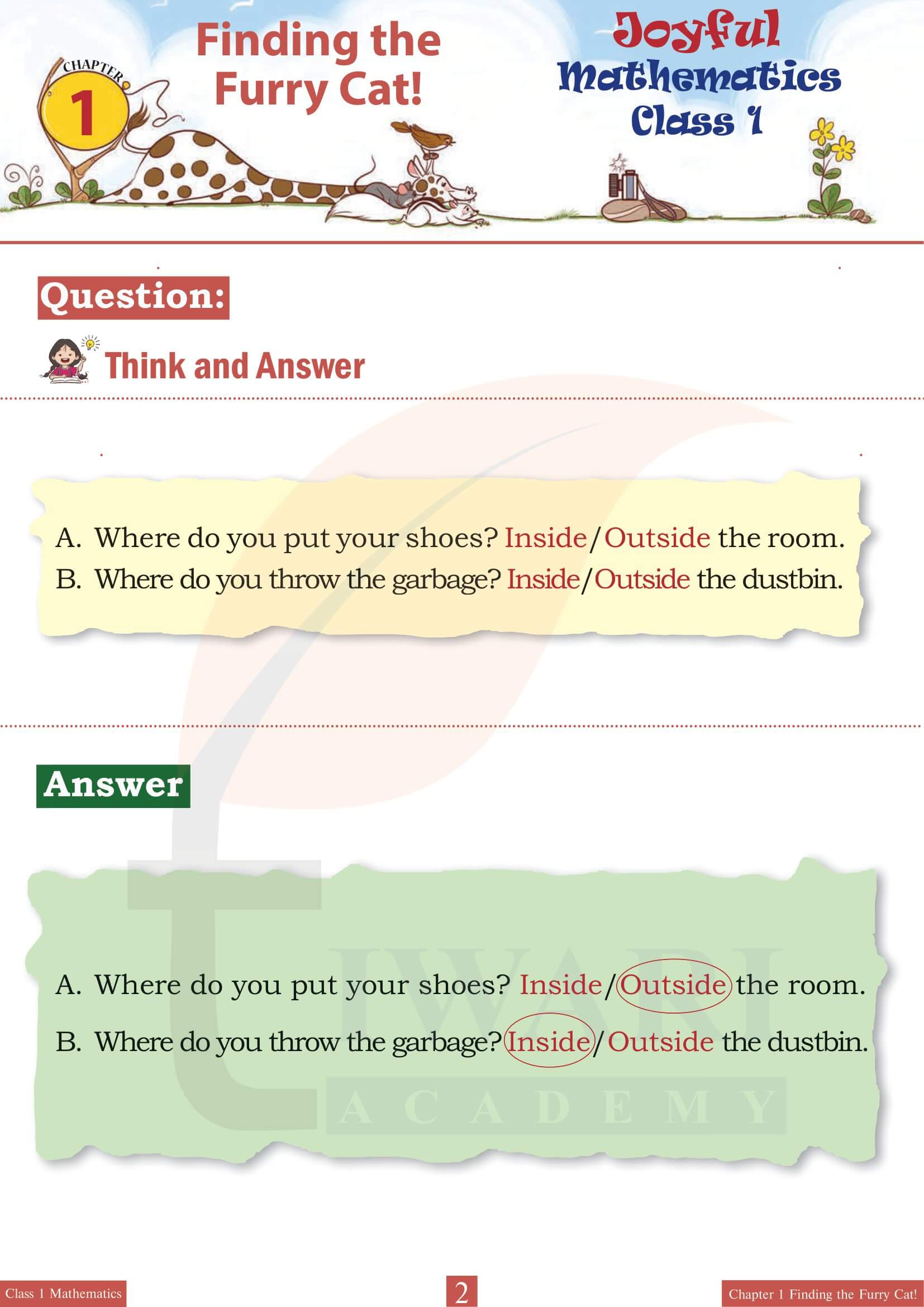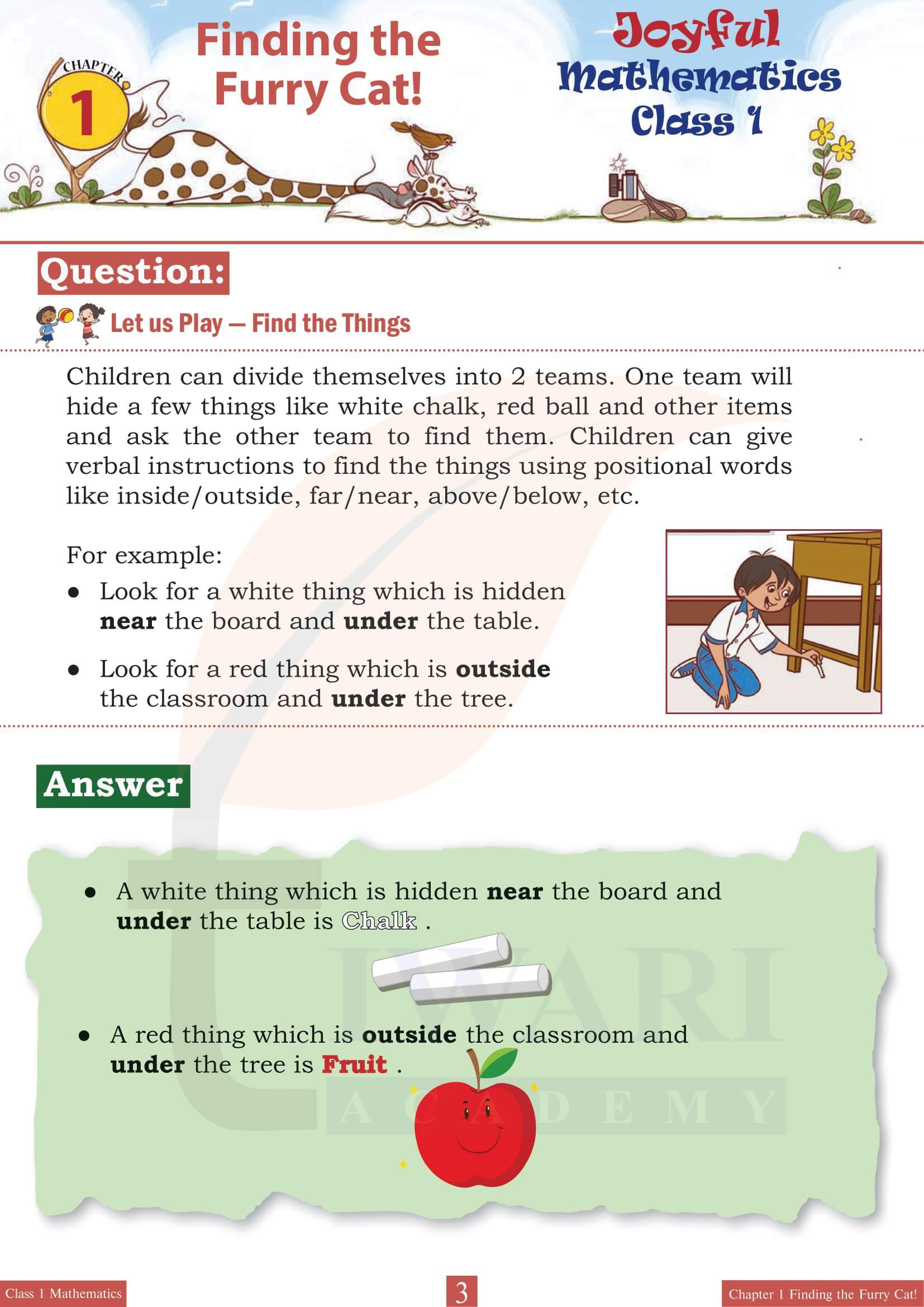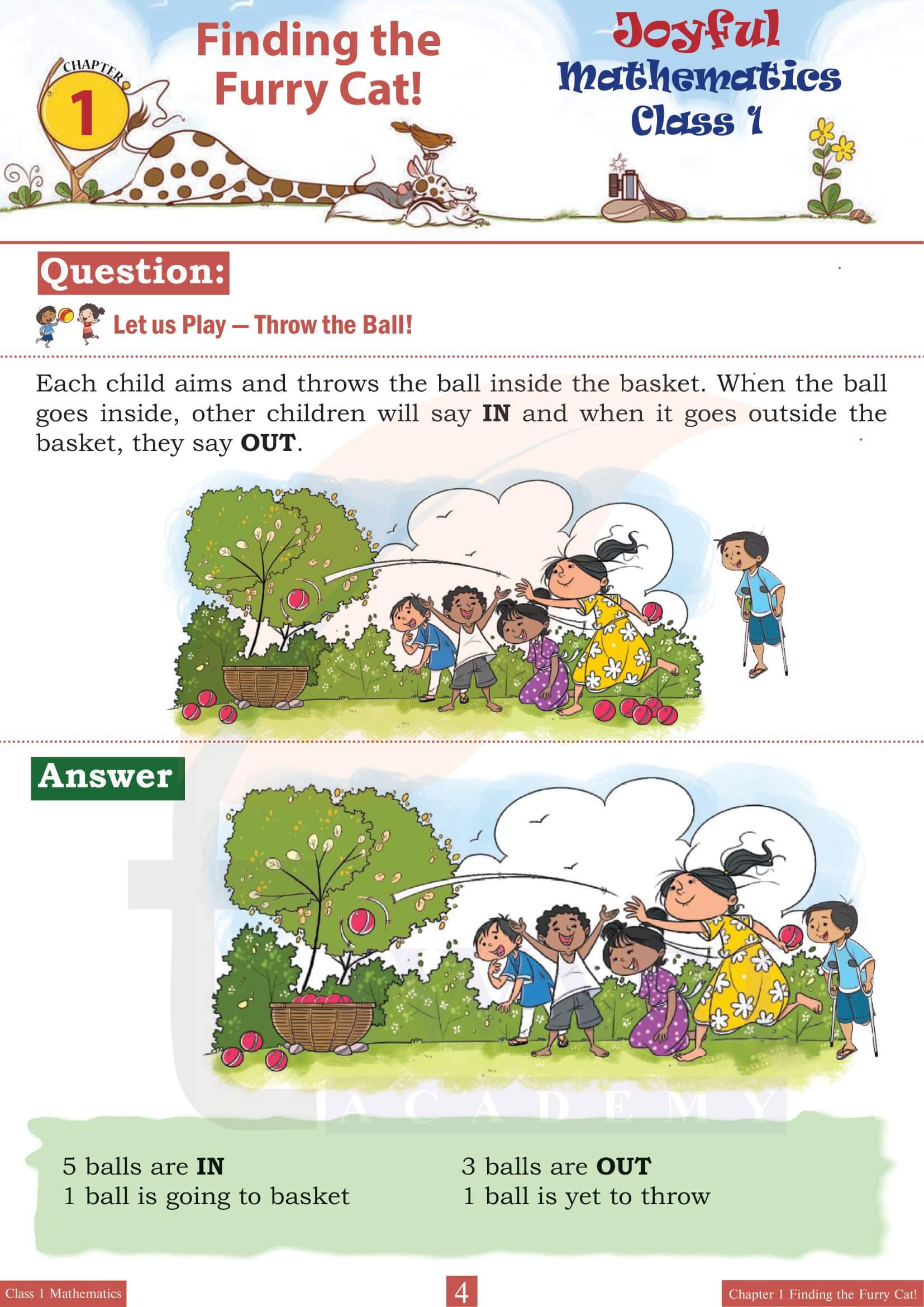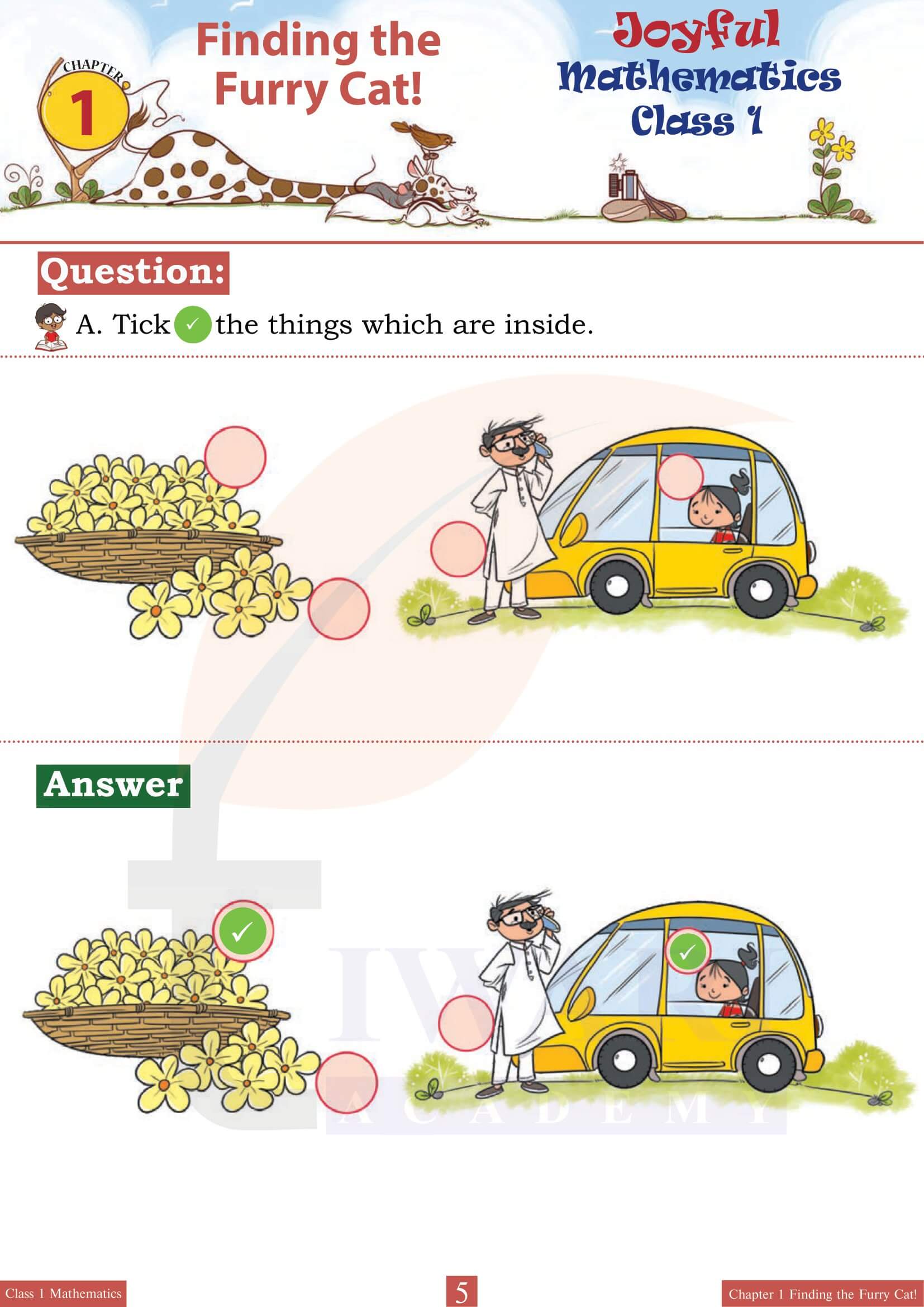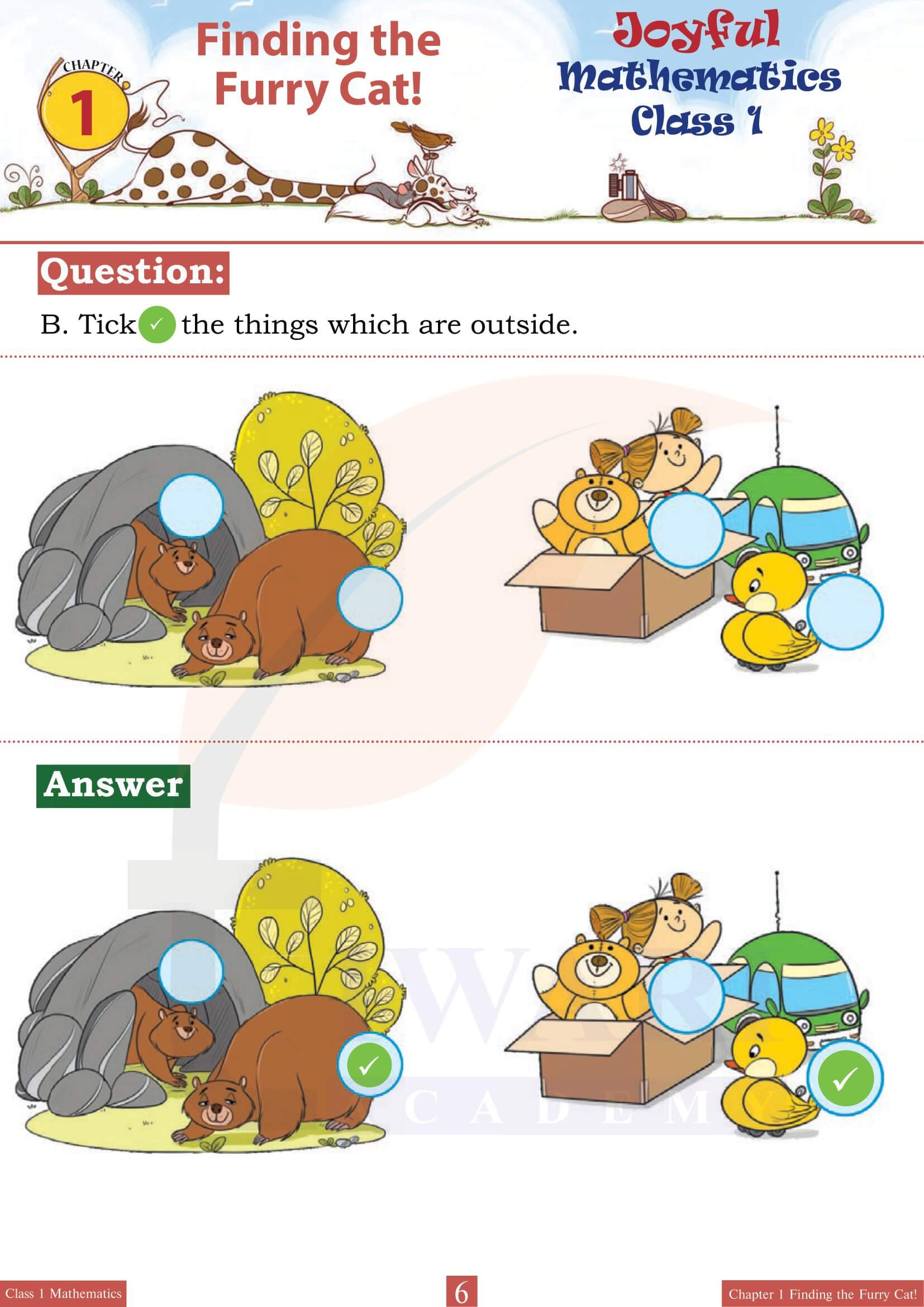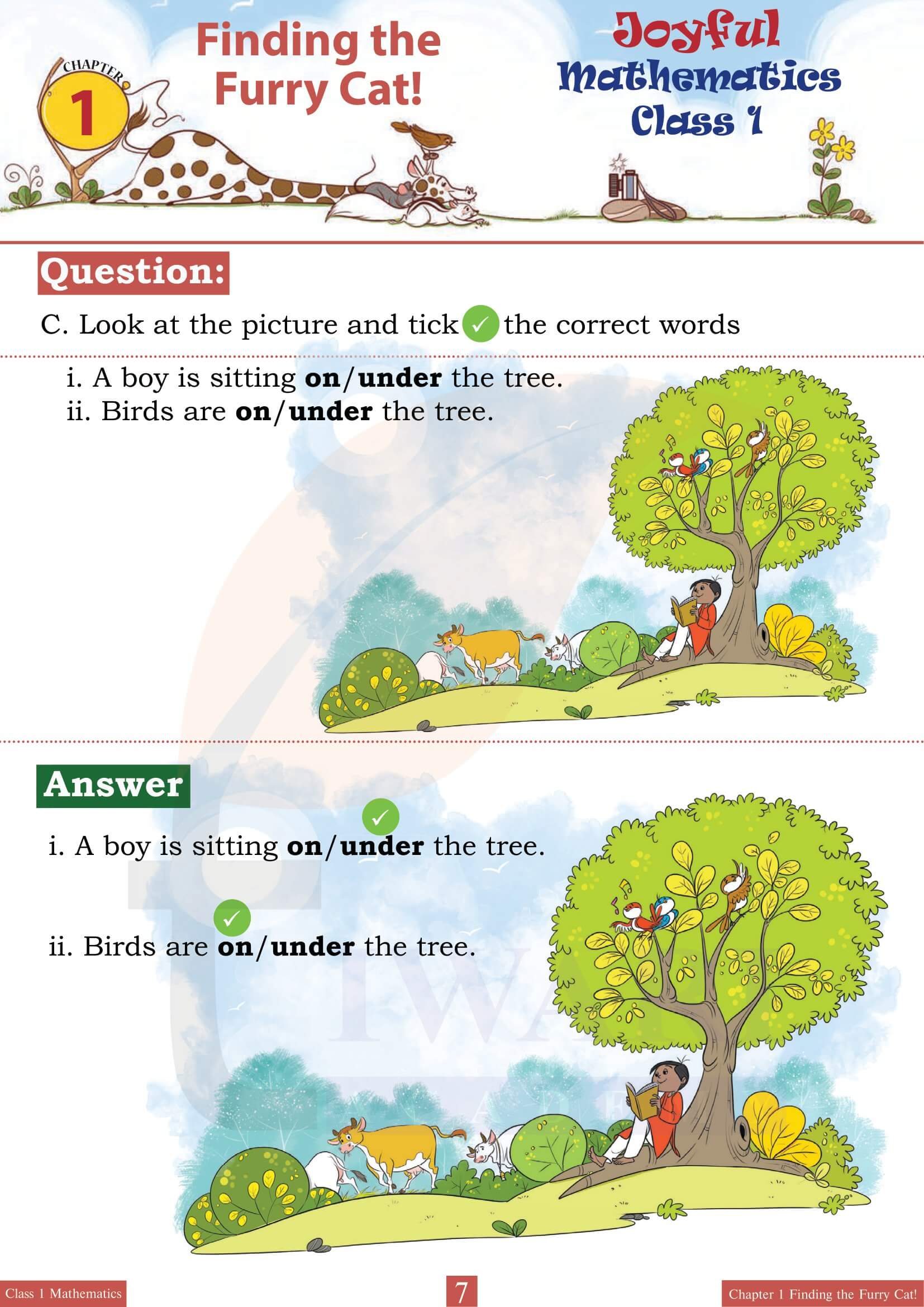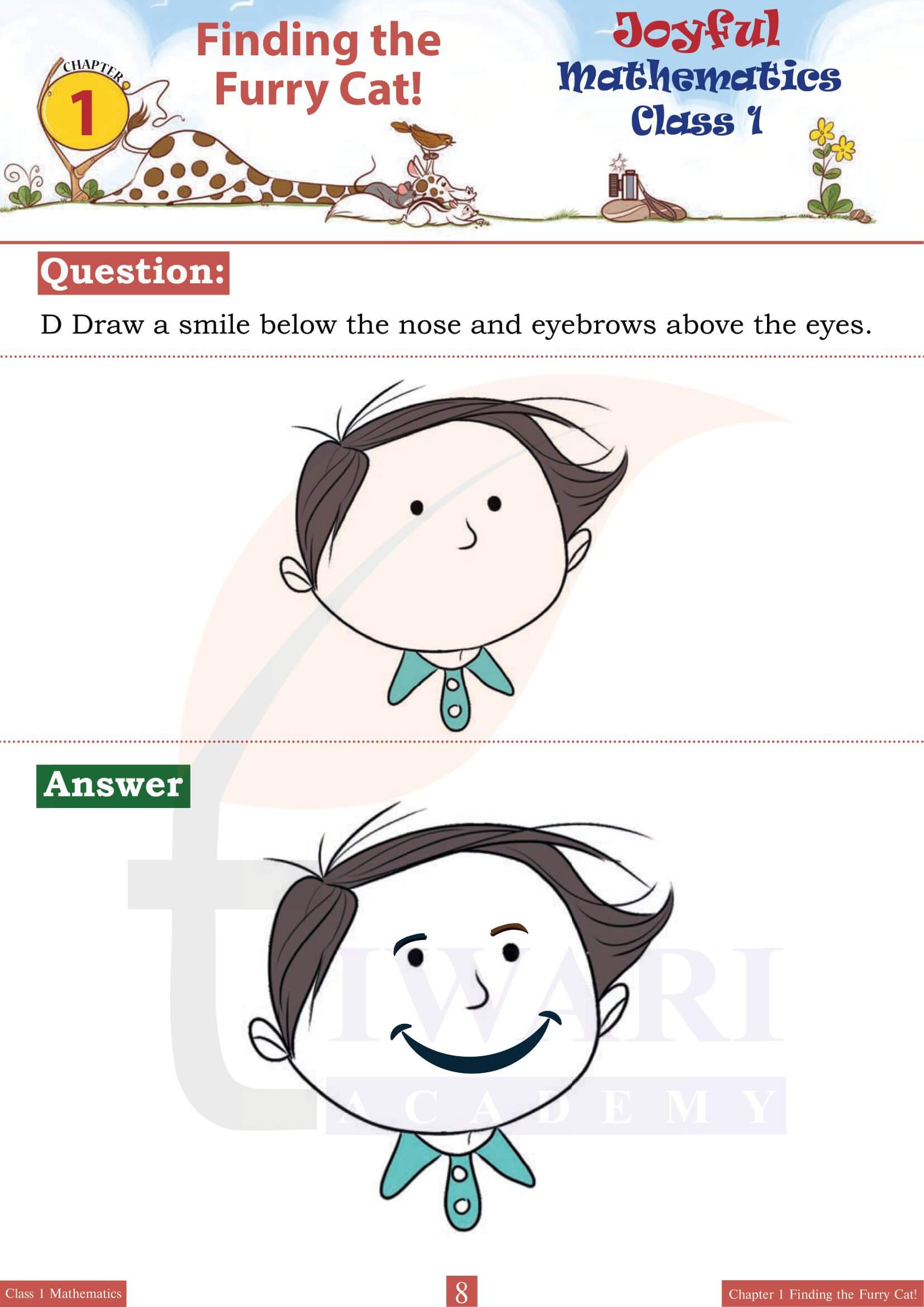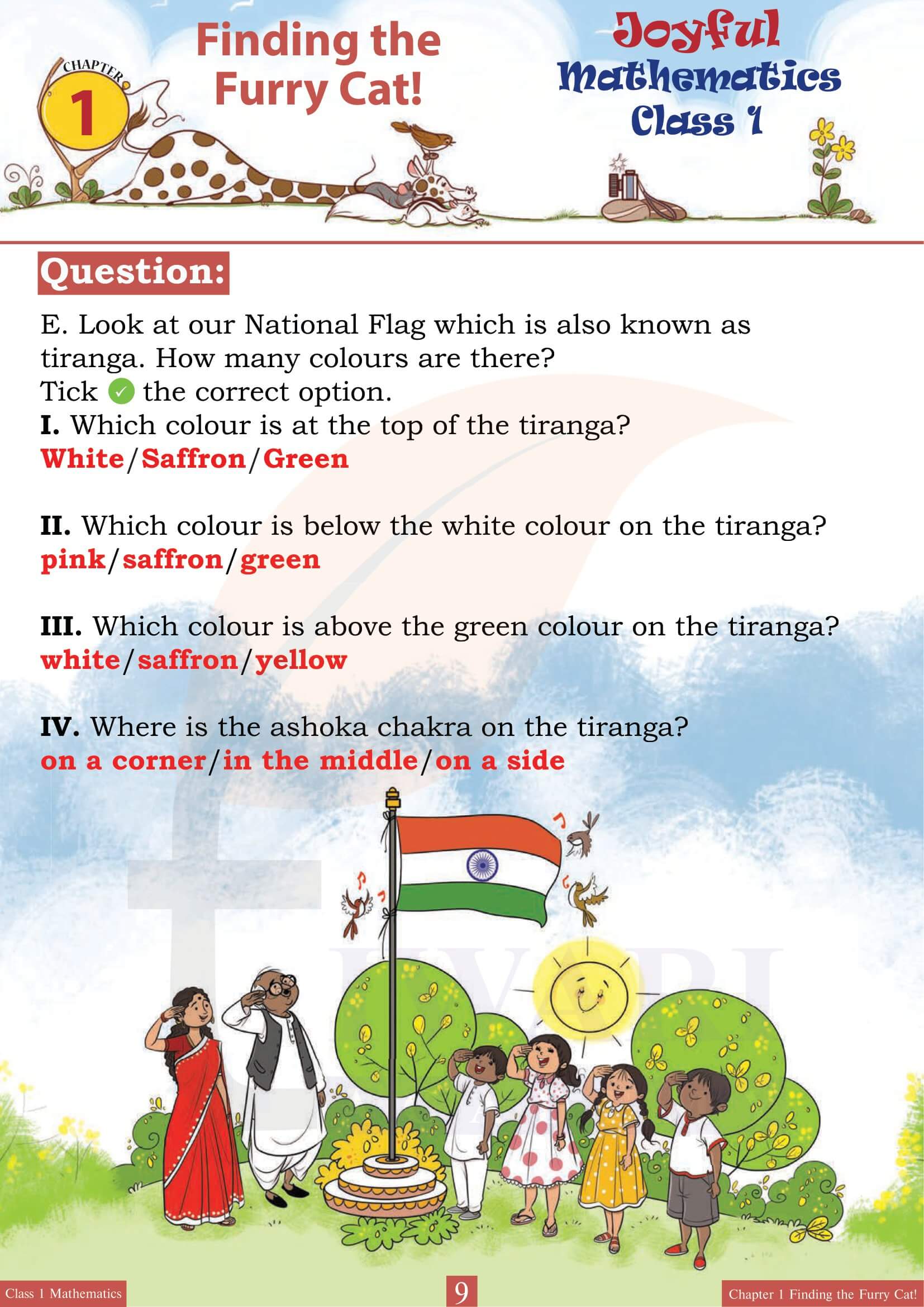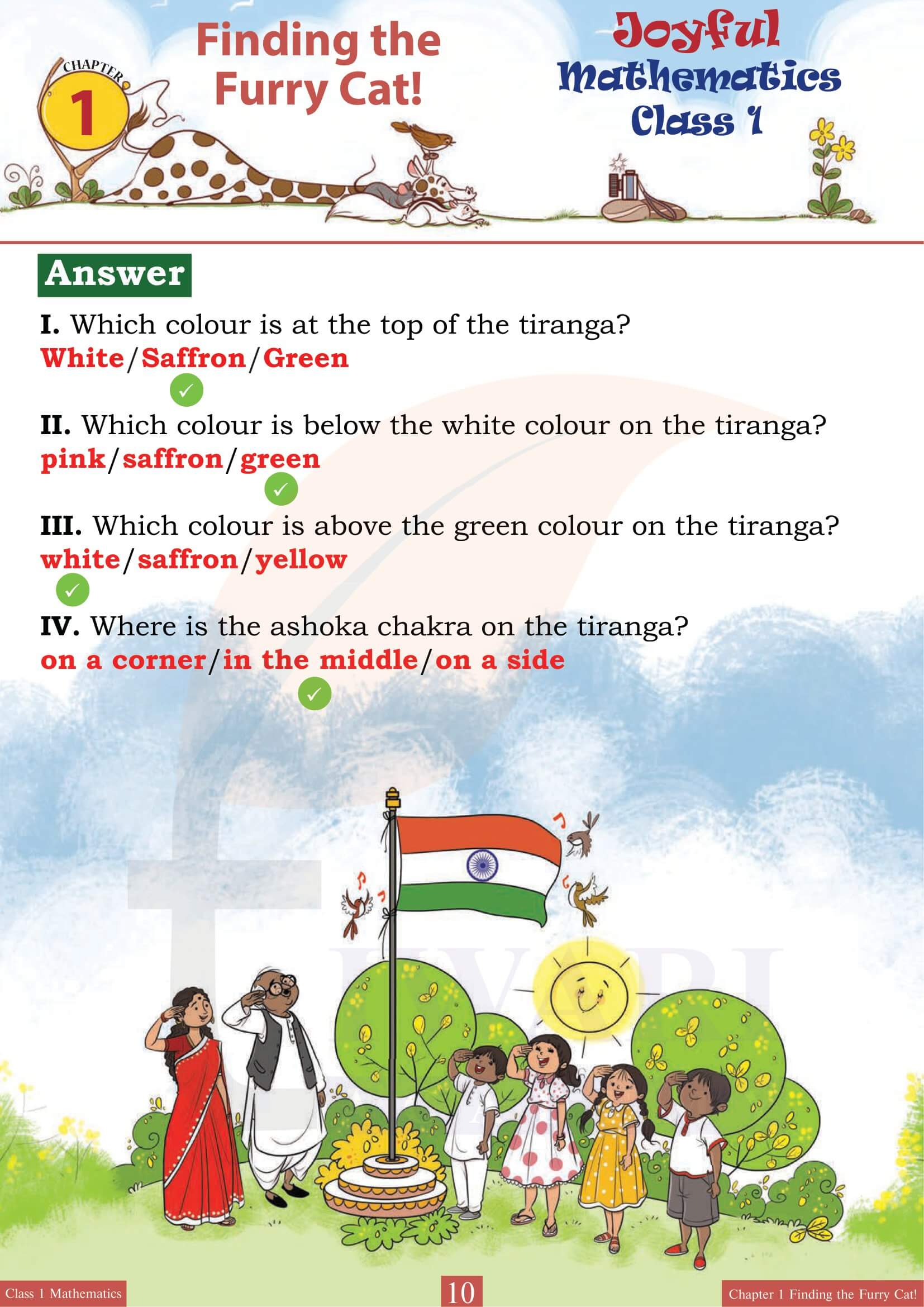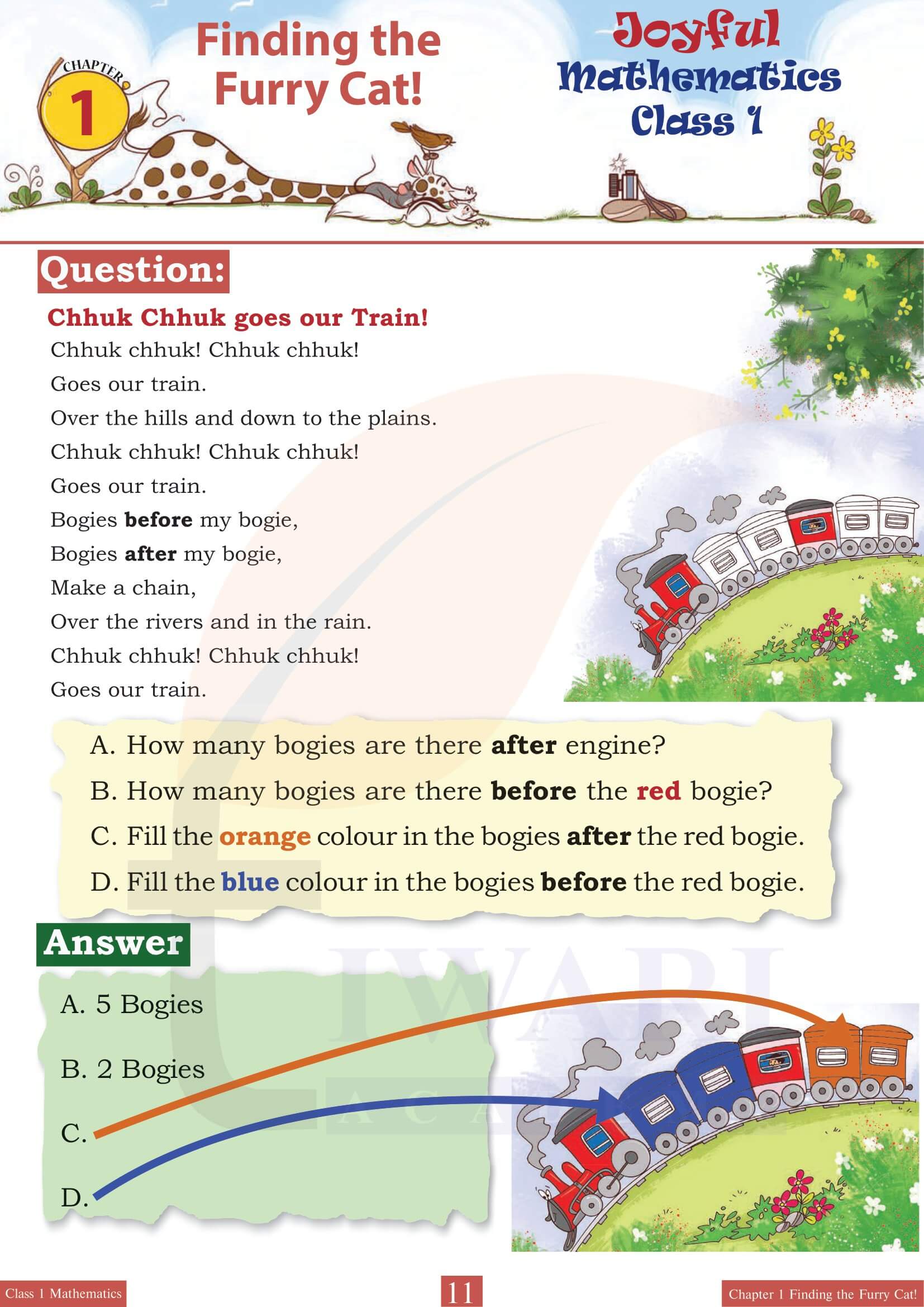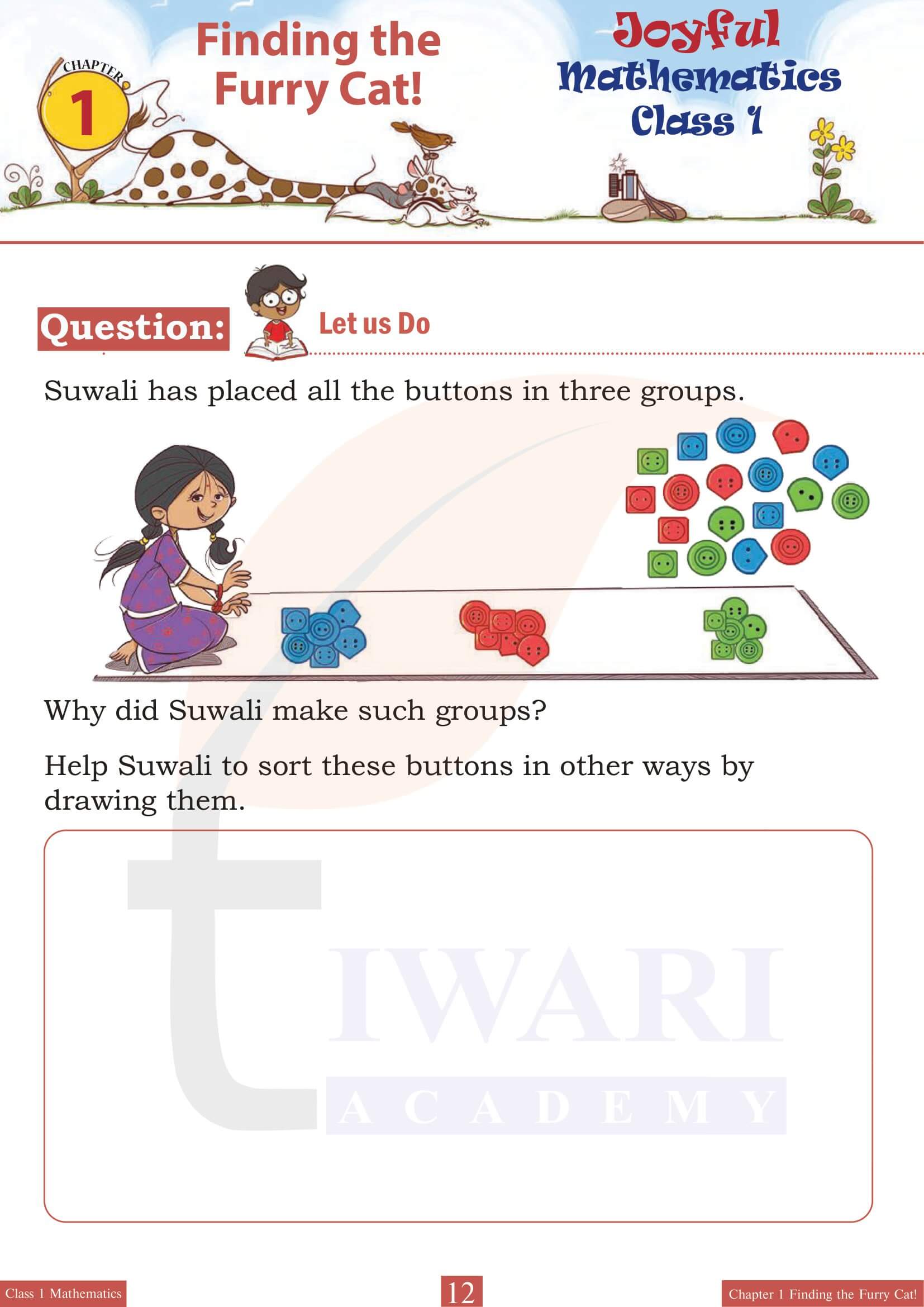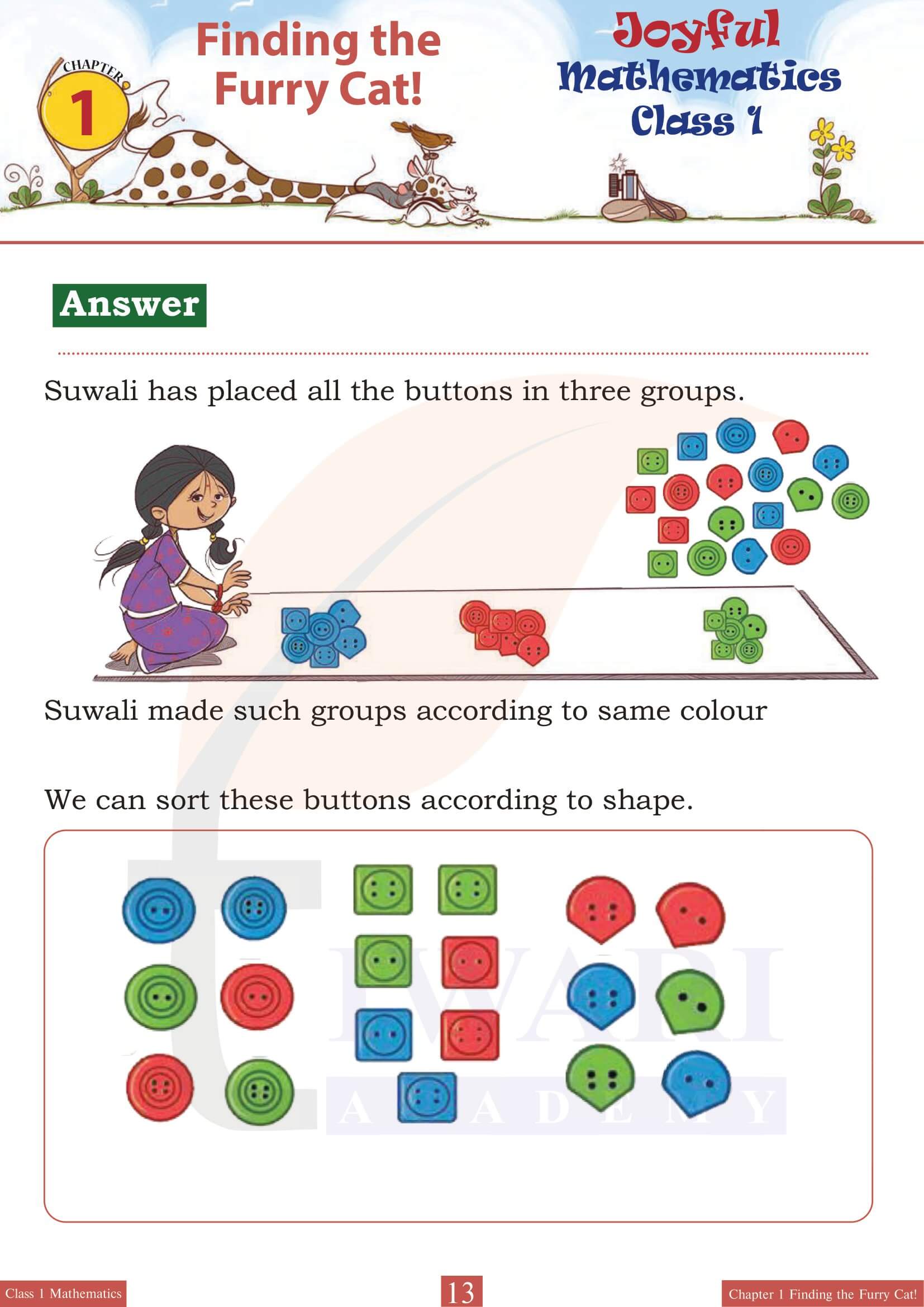NCERT Solutions for Class 1 Maths Joyful Chapter 1 Finding the Furry Cat! (Pre-number Concepts) for academic session 2025-26 in Hindi and English Medium are given here. Students of class 1 can get Joyful Maths Chapter 1 Question answers with explanation in simple explanation.
Tips and Tricks for Class 1 Maths Exam
Class 1 Maths Joyful Chapter 1 Finding the Furry Cat
Introduction to Spatial Concepts in Class 1 Maths
The Class 1 Joyful Mathematics Chapter 1 begins with activities that help children distinguish between objects and their placements, such as inside and outside. For example, one activity involves ticking items that are found outside, encouraging children to observe their environment and make distinctions based on spatial placement. Another activity asks children to draw facial features like eyebrows and smiles, integrating art with spatial awareness.
Engaging with Mathematics Through Play
Several activities are designed to make learning mathematics a playful experience. For instance, children are invited to throw a ball into a basket, saying “IN” when the ball goes inside and “OUT” when it misses, turning a simple game into a lesson on spatial vocabulary. This approach not only teaches mathematical concepts but also develops motor skills and cooperative play.
Grouping and Sorting
Class 1 Joyful Maths Chapter 1 includes exercises where children are asked to sort objects into groups, such as buttons, leaves and pebbles. This activity introduces the concept of categorization, a fundamental mathematical skill, in a hands-on manner. Children are encouraged to think about why objects are grouped in certain ways, promoting critical thinking and observation.
Poetry and Mathematics
Poetry is used as a medium to explore mathematical concepts. One poem, “Chhuk Chhuk goes our Train”, serves as a backdrop for activities related to counting and understanding sequences. Children are asked to count bogies, identify colors and even engage in discussions about their experiences with trains, making mathematics relatable and integrated with real-life experiences.
National Symbols and Colors
An activity centered around the National Flag of India (referred to as the “Tiranga”) introduces children to colors and their significance. Questions related to the flag’s colors and their arrangement foster a sense of national identity while teaching about sequences and order. This section of class 1 Joyful Mathematics blends civic education with mathematical understanding, showing the interdisciplinary nature of learning.
Interactive Games
The chapter 1 of 1st mathematics suggests games that require children to use positional words to find hidden objects, enhancing their vocabulary related to positions (above, below, inside, outside) and encouraging teamwork and communication. These activities are designed to be inclusive, suggesting adaptations for children with different abilities, ensuring that learning is accessible to all.
Encouraging Exploration and Discussion
Throughout the chapter 1 of Joyful mathematics, there are prompts for discussion and exploration, such as sharing experiences of train journeys or talking about animals seen around them. These discussions are aimed at developing language skills, empathy and a deeper understanding of the world, alongside mathematical concepts.
Class 1 Maths NCERT Chapter 1 exemplifies an educational approach that integrates mathematics with other areas of learning and everyday experiences. Through a variety of activities, children are introduced to basic mathematical concepts like spatial awareness, categorization, sequencing and the use of positional vocabulary in a manner that is engaging, interactive and grounded in real-life contexts. This approach not only aids in the comprehension of mathematical concepts but also fosters critical thinking, creativity, and a love for learning among young students.
Class 1 Joyful Maths NCERT Chapter 1
Class 1 Joyful Maths NCERT Chapter 1 is designed for young learners, focusing on introducing basic mathematical concepts through interactive and engaging activities. It emphasizes spatial awareness, categorization and sequencing by integrating playful exercises, such as identifying objects inside or outside, sorting items into groups, and using poetry to explore numbers and positions. Activities also include drawing, group discussions, and games that encourage the use of mathematical vocabulary in everyday contexts. Class 1 Joyful Mathematics Chapter 1 aims to make mathematics relatable and fun, fostering critical thinking and observation skills in children, while also incorporating elements of civic education through discussions about national symbols.
The content of Class 1 Maths NCERT Chapter 1, is designed to be accessible and engaging for Class 1 students. The activities and exercises are tailored to young learners, focusing on interactive and playful methods to introduce basic mathematical concepts. By integrating learning with games, poetry, and practical exercises such as sorting and grouping objects, the chapter aims to make mathematics relatable and enjoyable for children. The use of familiar contexts and everyday situations helps in making the concepts easy to understand. Additionally, the inclusion of visual and hands-on activities caters to different learning styles, ensuring that all students can participate and learn effectively. The approach taken in this chapter is likely to foster a positive attitude towards mathematics and encourage active participation among Class 1 students.
Learning approach of Joyful Mathematics for Class 1
The activities and teaching approach outlined in class 1 Maths NCERT Chapter 1 are designed to be enjoyable for a child studying in Class 1. The use of interactive games, playful exercises, and engaging content like poems and stories to introduce mathematical concepts is likely to capture the interest of young learners. The emphasis on hands-on learning, such as drawing, sorting objects and participating in group discussions, not only makes the learning process fun but also helps in retaining their interest and curiosity.
Incorporating elements of the children’s immediate environment and experiences, such as familiar objects and situations, makes the learning process relatable and enjoyable. Activities like making a train of children, finding objects based on positional words and coloring exercises are designed to be both educational and entertaining. These methods encourage active participation, creativity and social interaction among classmates, enhancing the overall learning experience.
Given the thoughtful integration of play and learning, it’s reasonable to expect that a child in Class 1 would find the content of this chapter enjoyable and engaging, making their introduction to mathematics a positive and memorable experience.
